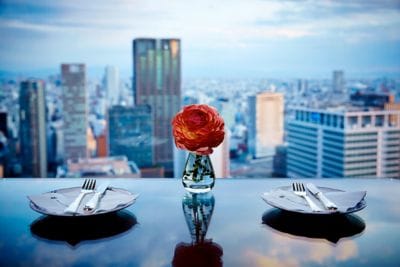-
Hotels & Resorts
-
Hotels & Resorts
-
New HotelsA New EraNew Hotels
Discover your next great escapes at the newest hotels and resorts from The Ritz-Carlton.
-
Ritz-Carlton ReserveA Place ApartRitz-Carlton Reserve
Find your home at the ends of the earth at one of these remote sanctuaries.
-
Meetings & CelebrationsEvents, Elevated.Meetings & Celebrations
At The Ritz-Carlton, we help you craft moments that will last a lifetime.
-
-
Residences
-
Yachts
-
About The Ritz-Carlton
-
About The Ritz-CarltonThe Gold StandardAbout The Ritz-Carlton
With a credo and corporate philosophy of unwavering commitment to service, The Ritz-Carlton sets the standard for luxury experiences the world over.
-
The Ritz-Carlton ExperienceInspiring Life’s JourneysThe Ritz-Carlton Experience
Explore how The Ritz-Carlton aspires to give you an experience that will stay with you forever.
-
About The Ritz-CarltonThe Gold StandardAbout The Ritz-Carlton
With a credo and corporate philosophy of unwavering commitment to service, The Ritz-Carlton sets the standard for luxury experiences the world over.
-
The Ritz-Carlton ExperienceInspiring Life’s JourneysThe Ritz-Carlton Experience
Explore how The Ritz-Carlton aspires to give you an experience that will stay with you forever.
-
-
The Journey
-
The JourneyThe JourneyThe Journey
Where will you go next? From far-flung locales to urban favorites, find inspiration for your next great escape.
-
Inspiration
-
Destination Guides
 Let Us Guide YouDestination Guides
Let Us Guide YouDestination GuidesWherever it is you want to explore next, our guides will take you there.
-
Travel Interests
-
The JourneyThe JourneyThe Journey
Where will you go next? From far-flung locales to urban favorites, find inspiration for your next great escape.
-
Inspiration
-
Destination Guides
 Let Us Guide YouDestination Guides
Let Us Guide YouDestination GuidesWherever it is you want to explore next, our guides will take you there.
-
Travel Interests
-

Across Japan, chefs at The Ritz-Carlton consider every component of the dishes they create to ensure that only the finest, freshest ingredients are incorporated into dishes that also pay deep respect to the region in which they’re served.
Sushi chefs at The Ritz-Carlton, Tokyo work with only select fishermen and dealers at Tsukiji, the world’s largest fish market, to determine which catches best represent the most-desired internal and external qualities — the ideal of which is known as kata. Their philosophy, following a source-to-table concept, is to create each day’s menu based off that morning’s selections and the freshest seasonal local produce. By following this philosophy, the menu of edomae sushi marries a minimalist approach with a diversity of flavors, no matter the season.
At Hinokizaka restaurant, the sake sommelier’s recommended choice is locally produced as well. As he discusses the tradition and innovation of the Sawanoi brand, which is brewed in the countryside of west Tokyo by a company that dates back to 1702, both the senses and intellect of guests are piqued.

Sushi is more than fish, of course: The word itself is derived from su, Japanese for vinegar, and shi, from meshi, for rice. The sushi masters at Hanagatami at The Ritz-Carlton, Osaka performed a blind tasting of 10 different kinds of rice to select the one that would be used in the Japanese restaurant’s sushi. The restaurant now partners with a single rice farmer, whose winning variety is grown in a paddy that’s exposed to a wide range of temperatures and high-quality water — ideal situations for rice cultivation.
The water used to boil the rice also was put to the test, comparing three different varieties before deciding on one sourced from a spring in the same area as the rice paddy. The result, chefs say, is “exquisite combination with a refined flavor.”

The presentation of dishes, too, can be inspired by local landmarks and destinations. Chef Masahiro Miura of the Michelin-starred Mizuki restaurant at The Ritz-Carlton, Kyoto was so moved by the city’s many Zen temples and karesansui dry gardens, which are created using rock and sand, that he was inspired to mimic their appearance.
Miura’s “karesansui sashimi” positions fresh seasonal vegetables and sashimi such as hamo and katsuo atop crushed ice that mirrors the sand of the Zen garden at the Daisen-in temple, while other segments of arched ice represent the garden’s impenetrable horaisan mountain. It’s a treat as much for the eyes as the appetite, paired with a private-label sake exclusively for guests of Mizuki that the hotel chefs helped to develop in 2015, planting rice in southern Kyoto, collaborating with brewers in Fushimi on the sake formula, and even designing the bottle itself.
RITZ® is a Registered Service Mark of The Ritz Hotel, Limited, and is used by The Ritz-Carlton Hotel Company under License.
© 2025 The Ritz-Carlton Hotel Company, L.L.C. All rights reserved.








